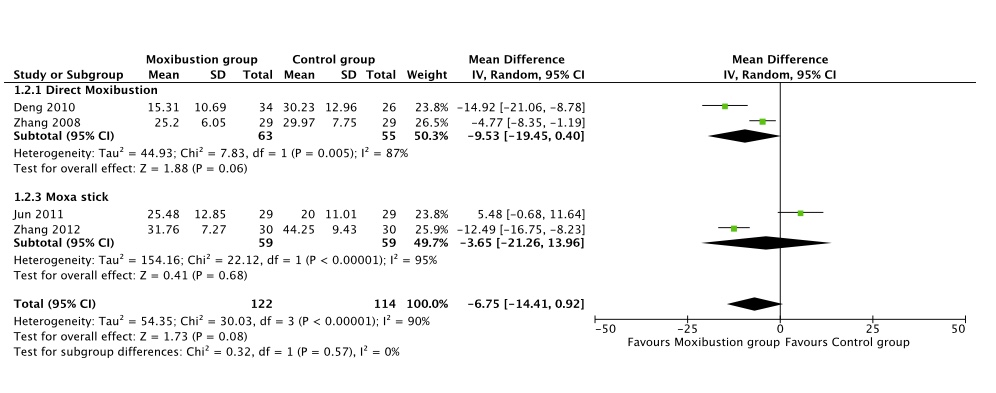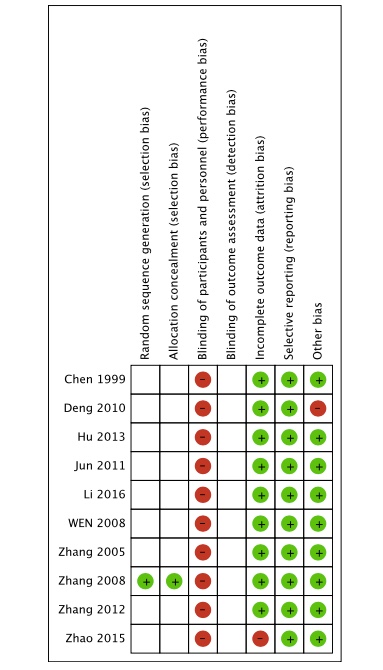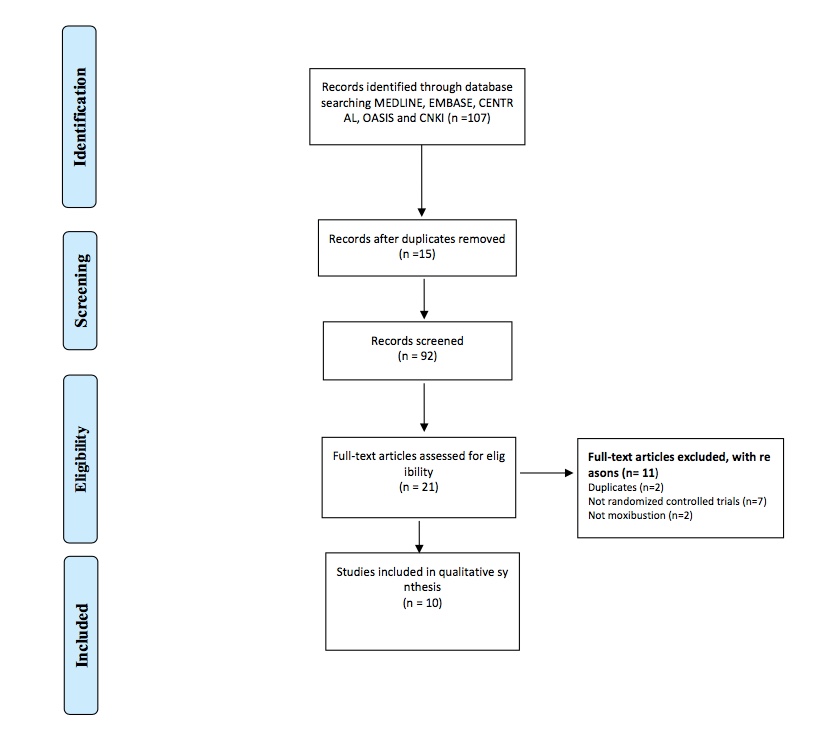Session Information
Date: Thursday, June 8, 2017
Session Title: Parkinson’s Disease: Clinical Trials, Pharmacology And Treatment
Session Time: 1:15pm-2:45pm
Location: Exhibit Hall C
Objective: This systematic review aimed to evaluate effectiveness and safety of moxibustion therapy for IPD patients.
Background: Idiopathic Parkinson’s disease (IPD) is a chronic neurodegenerative disorder which requires medical care for many years after the first diagnosis. Moxibustion, burning of Mugwort or Moxa for stimulating acupuncture point on the skin, is one of the common non-drug treatments for IPD in traditional East-Asian medicine. Currently there is no systematic reviews on the effect of moxibustion for IPD.
Methods: Electronic databases including Medline, the Cochrane Central Register of Controlled Trials (CENTRAL), EMBASE, OASIS (Korean database), CNKI (Chinese database) were searched until December, 2016. Search strategy were modified based on the individual databases but mainly 2 words, “Parkinson’s disease” and “Moxibustion” were combined appropriately for database search. Data extraction and risk of bias were assessed by two researchers (KTH and KSW) and an arbiter (CKH) decided disagreement between researchers. Risk ratio (RR) was used for the effect estimates for dichotomous outcomes and mean difference (MD) was for continuous outcomes in meta-analysis. Fixed effect model was planned to use for meta-analysis but random effect model was adopted if statistical heterogeneity was observed.
Results: A total of 10 studies (644 IPD patients) were included in this review (figure 1). Overall methodological rigor could not be ensured because detailed information was not suggested in most of the studies (figure 2). Comparing with moxibustion group and control group, there was no significant difference in the overall effectiveness ratio (RR 1.20, 95% CI [1.00 to 1.44], figure 3). About total UPDRS score, there was no significant difference between moxibustion and control interventions (MD -6.75, 95% CI [-14.4 to 0.92]) regardless of moxibustion type (direct moxibustion: MD -9.53 95% CI [-19.45 to 0.40] / Moxa stick: MD -3.65, 95% CI [-21.26 to 13.96], figure 4). Adverse events related to moxibustion treatment were not reported in most of the studies.
Conclusions: Conclusive evidence on the benefit and harm of moxibustion therapy for IPD could not be suggested due to methodological problems and clinical heterogeneity among the included studies. More rigorous clinical studies will be necessary in future.
References: 1. Chen X. Clinical Observation on 30 Cases of Paralysis Agitans Treated by Acupuncture plus Direct Moxibustion. Journal of Traditional Chinese Medicine 1999;40(06):342-43.
2. Deng X. Clinical Observation on Moxibustion in the treatment of Myotonicmyopathies of Parkinson’s Disease. Guangzhou University of Chinese Medicine, 2010.
3. Hu B, Xu Y. Clinical Observation of Acupuncture Combined with Moxibustion in Treating Sleep Disorders of Parkinson ‘s Disease. World Federation of Chinese Medicine Societies Professional Committee of the establishment of the General Assembly of Chinese Medicine Symposium of Chinese Medicine Symposium General Assembly 2013 annual meeting of conference proceedings 2013
4. Jun L. Mild moxibustion with Madopar in Parkinson’s patients to improve the clinical observation of daily activities. Hubei University of Chinese Medicine, 2011.
5. Li M, Zheng J, Wang H, et al. Effect of acupuncture and moxibustion combined with Deanxit in the treatment of neuropsychiatric disorders of Parkinson’s disease. Practical Clinical Journal of Integrated Traditional Chinese and Western Medicine 2016(06):68-69, 83.
6. WEN X, LI Yw, DUAN Q. Abdominal Acupuncture plus Moxibustion for Treatment of Parkinson Disease Rigidity in 30 Patients. Academic Journal of Guangzhou Medical College 2008;36(01):59-61.
7. Zhang J, Sun G, Zhao G. Observation on therapeutic effect of herbs-partitioned moxibustion on Parkinson disease of 54 cases. Zhongguo zhen jiu = Chinese acupuncture & moxibustion 2005;25(9):610-12.
8. Zhang P. Clinical study on abdominal-acupuncture binding moxibustion in the treatment of Parkinson’s disease. Guangzhou University of Chinese Medicine, 2008.
9. Zhang J-m, HU D, XU L. Observations on the Efficacy of Heavy Moxibustion on Pont Yongquan as Main Treatment for Parkinson’s Disease. Shanghai Journal of Acupuncture and Moxibustion 2012(11)
10. Zhao Y, Liu P, Wang M, et al. Clinical Observation of Needle Warming Moxibustion Combined with Function Training on Dysphagia of Parkinson’s disease. Chinese Medicine Modern Distance Education of China 2015(07):61-63.
To cite this abstract in AMA style:
T.-H. Kim, S. Kwon, W.-S. Jung, S.-K. Moon, C.-N. Ko, S.-Y. Cho, C.-Y. Jun, S.-H. Lee, K.-H. Cho. Moxibustion for Parkinson’s disease: a systematic review of randomized controlled trials [abstract]. Mov Disord. 2017; 32 (suppl 2). https://www.mdsabstracts.org/abstract/moxibustion-for-parkinsons-disease-a-systematic-review-of-randomized-controlled-trials/. Accessed May 13, 2025.« Back to 2017 International Congress
MDS Abstracts - https://www.mdsabstracts.org/abstract/moxibustion-for-parkinsons-disease-a-systematic-review-of-randomized-controlled-trials/




